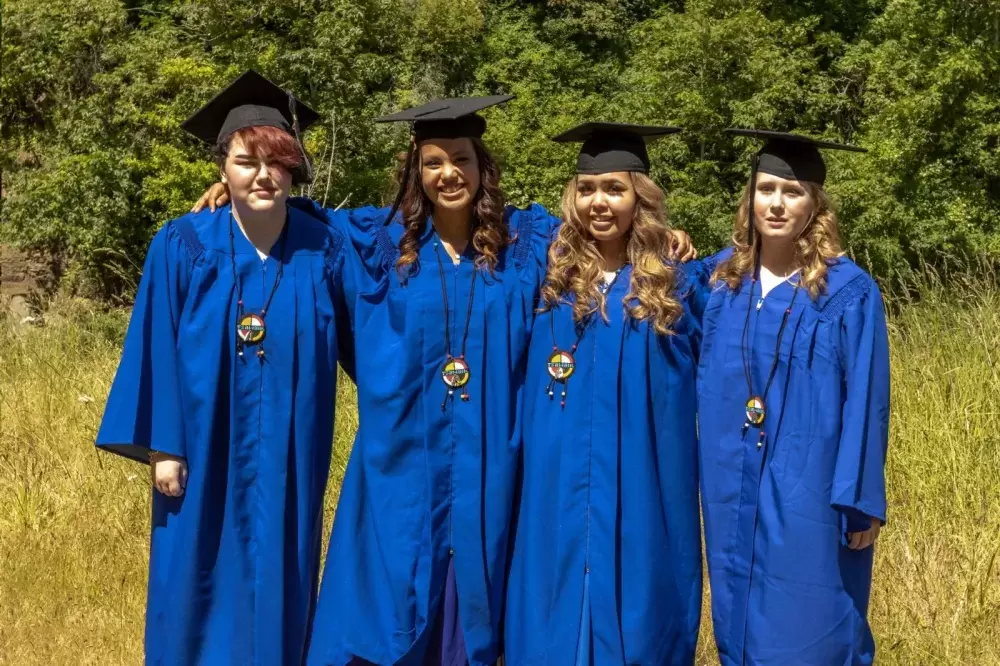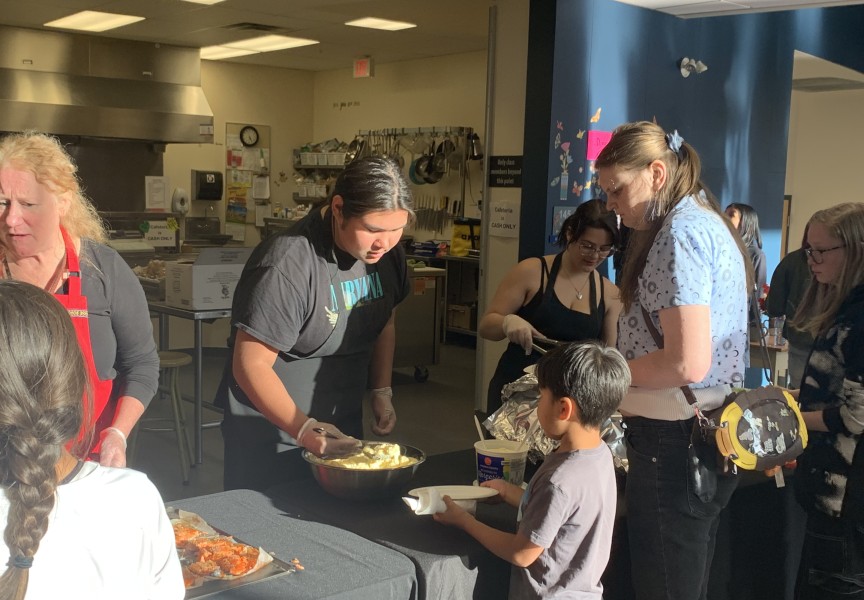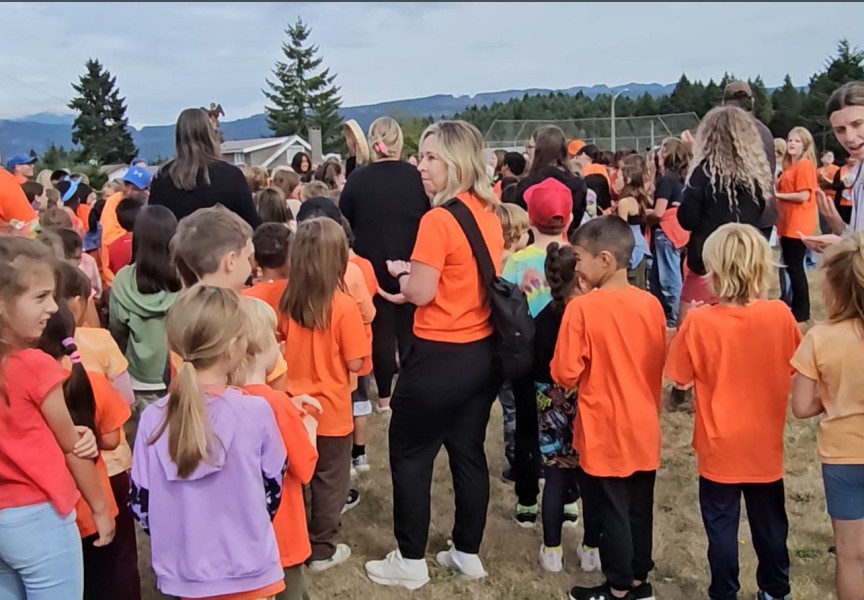The Nanaimo Aboriginal Centre (NAC) has launched a fundraiser to create the first K-12 independent school in B.C. dedicated to serving urban Indigenous youth.
The initiative is in response to community feedback about the consolidation of two Indigenous learning centres into the Nanaimo-Ladysmith school district at the end of this month, in accordance with a B.C. Ministry of Education directive.
The Nisaika Kum’tuks Learning Centre was created in 2014 and the Tsawalk Learning Centre in 2016 by NAC and the Mid Island Métis Nation (MIMN) in collaboration with the Vancouver Island West School District 84. The centres were established to meet the urgent needs of Indigenous students in the Mid Island area who are vulnerable and have difficulty engaging in the mainstream school system.
According to a press release, Nisaika Kum’tuks and Tsawalk demonstrated their effectiveness by building trust within the community through a respect for Indigenous culture and an open-door policy that made staff available to students 365 days a year.
The Mid Island Métis Nation and NAC are concerned that following the consolidation, the urban students, having struggled in the past, may have difficulty transitioning successfully to a larger educational system due to a lack of Indigenous-centred support systems and year-round programming.
To continue providing for the educational requirements and well-being of the students, MIMN and NAC have applied for an independent school license.
Joy Bremner, president of the MIMN, said there are about 100 students currently enrolled at Nisaika Kum’tuks and Tsawalk learning centres and about 75 per cent are Indigenous. Fourteen of the students between the learning centres are Nuu-chah-nulth.
“We have such a small setting which really services a tiny portion of the population that can’t function in the regular public school system,” said Bremner of the need for an independent school licence. “It has to be a safe and healthy, culturally-sensitive atmosphere with a lot of one-on-one teaching, an elder in every day and local Indigenous communities involved coming in to do different programming and sharing.”
Bremner said it’s important to have independent schools in place for Indigenous youth because many have experienced some level of intergenerational trauma. She said having an educational system that recognizes those traumas and can offer the proper resources is essential.
“To present the opportunity for so many different aspects of education, it’s a priority in this day and age,” Bremner said, stressing the importance of acknowledging intergenerational trauma. “We’re determined to take action and provide a safe, healthy and culturally-sensitive environment for our young learners.”
Currently Nisaika Kum’tuks and Tsawalk operate under the Gold River School District but the Ministry of Education has directed that the learning centres be transferred to the Nanaimo-Ladysmith school district on June 30, meaning the centres will close.
“What we’re doing now is looking at combining into one centre, kindergarten to Grade 12. It will be open to the same types of students,” Bremner said.
The NAC campaign is seeking to raise $1 million to support the development of an independent K-12 school program and application process for a 2022 opening. Funds will also go towards securing a new physical site in Nanaimo, as it will combine the Nisaika Kum'tuks Learning Centre (K-7) with the Tsawalk Learning Centre (Grades 8-12). The school will provide Dogwood diplomas, Adult Dogwood diplomas and Evergreen certificates to graduates.
The two centres currently include eight teachers, three support workers, a land and sea coordinator, two elders and various program supports from the community partners. Curriculum combines traditional teachings, culture and academics, in addition to work experience and trades training.
More than 30 per cent of Tsawalk students are in or from care of the Ministry of Children and Family Development or a Delegated Aboriginal Agency. Most are from single-parent homes struggling with poverty and intergenerational trauma as a result of residential schools. Tsawalk serves all people of colour as well as non-Indigenous students.
This June 13 students graduated from Tsawalk Learning Centre and 12 graduated last year.
“The United Nations Declaration on the Rights of Indigenous Peoples (UNDRIP) articulates that Indigenous peoples have the right to establish and control their educational systems,” Bremner said. “According to UNDRIP, the state should take effective measures so that Indigenous individuals — particularly children — can have access to an education in their own culture when possible.”
Greg Charleson, an elder from the Hesquiaht First Nation and cultural support worker at the Tsawalk Learning Centre, has two sons currently attending the school.
Charleson said both of his sons have gained a better understanding and appreciation for their culture by attending the learning centre.
“When I think of my oldest son who was not very much into his culture, he hardly even picked up a drum until he came here,” Charleson said. “The youngest boy is a leader, he’s a lead singer already and to see my older son pick up a drum and have his dancing spirit awoken is an amazing thing to see.”
Charleson said he’s seen many students come to the learning centres looking “broken” and withdrawn, but he says with time they will learn to sing or drum and have a deeper sense of purpose and connection to their culture.
“When I think of residential schools, as I’m a residential school survivor/miracle because I don’t like that label survivor, I’m a miracle, and what those schools didn’t do for me was help me to identify who I am and where I come from. [The learning centres] are the exact opposite,” Charleson said. “This school helps to bring identity and form a foundation not only with the student learner but with the family.”
Charleson said the schools provide teachings from many different First Nations, including Nuu-chah-nulth traditions.
A Go Fund Me has been started to raise money to set up the independent school. A link to the fundraiser can be found on the Nanaimo Aboriginal Centre Facebook page. Currently just over $19,000 has been raised of the $1 million goal.







